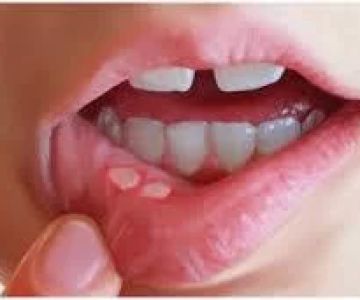Oral Thrush: A Comprehensive Overview
Oral thrush is a fungal infection that can occur in the mouth, throat, and other parts of the body. It is most common in toddlers and children but can affect anyone. The fungus, Candida, usually exists in small amounts in the mouth, digestive tract, and skin. However, certain factors like medications, health conditions, or lifestyle choices can cause an overgrowth, resulting in oral thrush. The symptoms of oral thrush can include creamy white lesions on the tongue, inner cheeks, roof of the mouth, gums, tonsils, or back of the throat. Other symptoms may include redness and soreness inside and at the corners of the mouth, loss of sense of taste, a cottony feeling in the mouth, and in severe cases, pain or difficulty swallowing.
Who Is at Risk?
Some groups are more prone to getting oral thrush. Babies under 1 month old, toddlers, adults aged 65 or over, and people with weakened immune systems such as those with diabetes, anemia, HIV/AIDS, cancer, dry mouth, pregnancy, smoking, or ill-fitting dentures are at higher risk. The infection can be contagious to those at risk but is not typically highly contagious among people with healthy immune systems.
Diagnosis and Tests
A healthcare provider can usually diagnose oral thrush by visually inspecting the distinctive white lesions in the mouth. A microscopic exam of tissue from a lesion can confirm the diagnosis. If the thrush extends into the esophagus, additional tests like a throat culture, endoscopy, or X-rays of the esophagus may be conducted.
Management and Treatment
The typical treatment for oral thrush is antifungal medications. These are available in various forms such as tablets, lozenges, or liquids. The duration of treatment usually lasts for 10 to 14 days. Kids and adults with healthy immune systems typically respond well to antifungal treatment. However, those with weakened immune systems may have more severe symptoms and a harder time getting rid of the infection. Antifungals can clear up thrush in one to two weeks, but it may be necessary to continue the medication for a few more days to ensure all the fungus is eradicated.
Prevention
To lower the risk of oral thrush, it is important to practice good oral hygiene, avoid certain mouth products, see a dentist regularly, limit foods that encourage Candida growth, and avoid smoking.
Outlook and Prognosis
With treatment, oral thrush usually resolves within one to two weeks. However, if symptoms persist or worsen, it is important to inform the healthcare provider.
When to Seek Medical Attention
If you develop signs or symptoms of oral thrush, such as soreness, bleeding, or raised white areas inside the mouth, it is advisable to schedule an appointment with a healthcare provider. If symptoms return after antifungal treatment, contact your provider immediately as it could indicate a more serious infection.
Oral thrush is a fungal infection that can cause discomfort and inconvenience, but with proper diagnosis and treatment, it can be managed effectively. It is crucial to be aware of the risk factors and take preventive measures to avoid its occurrence. For those affected, prompt medical attention and adherence to the prescribed treatment plan can lead to a quick recovery and a return to normal oral health.



 Summit Fair Dental Care4.0 (792 review)
Summit Fair Dental Care4.0 (792 review) Harmony Dental Health4.0 (259 review)
Harmony Dental Health4.0 (259 review) Chelmsford Family Dental5.0 (22 review)
Chelmsford Family Dental5.0 (22 review) Dalley R Lindsey DDS5.0 (22 review)
Dalley R Lindsey DDS5.0 (22 review) Farrow Orthodontics - City Center5.0 (458 review)
Farrow Orthodontics - City Center5.0 (458 review) Small World Dental - Pediatric Dentist and Orthodontist4.0 (1469 review)
Small World Dental - Pediatric Dentist and Orthodontist4.0 (1469 review) The Importance of Oral Health Education During Pregnancy for a Healthy Pregnancy
The Importance of Oral Health Education During Pregnancy for a Healthy Pregnancy Best Tips for Brushing Your Teeth Properly for Healthy Gums: Essential Techniques for Oral Health
Best Tips for Brushing Your Teeth Properly for Healthy Gums: Essential Techniques for Oral Health Why Skipping Dental Checkups Can Lead to Bigger Oral Health Problems
Why Skipping Dental Checkups Can Lead to Bigger Oral Health Problems Advantages of Porcelain Dental Restorations
Advantages of Porcelain Dental Restorations How Can Diabetes Cause Tooth and Gum Problems? Preventing and Managing Oral Health Issues
How Can Diabetes Cause Tooth and Gum Problems? Preventing and Managing Oral Health Issues Healthy Habits for Promoting Good Oral Health and Hygiene: Tips for a Healthy Smile
Healthy Habits for Promoting Good Oral Health and Hygiene: Tips for a Healthy Smile